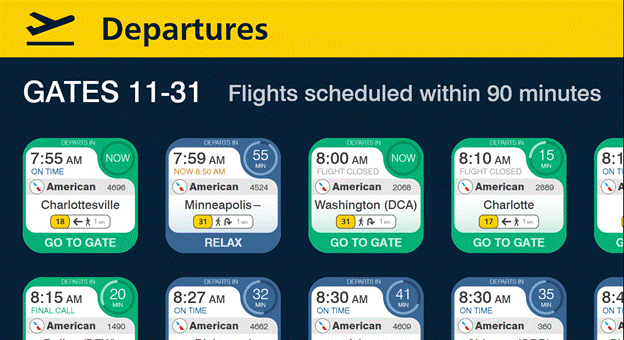By John Hoover, Marketing Director, Tellabs
Orlando International Airport’s new Terminal C had an initial opening in September 2022, greater fanfare in the December 2022 time frame and has been in full flight ever since. They have published a few announcements touting how they are “one of the first North American airports to install a Passive Optical Network (PON), utilizing fiber-optic technology to create a high-speed, future-proofed, energy-efficient IT system.”
As the PON equipment provider at DFW, ORD, LGA, CDG and MCO, it seems fitting to expand on the reasons why this innovative fiber-based network is high-speed, future-proof and energy-efficient.
- High-Speed – This fiber-first design promotes the use of optical cables to transmit data across far reaching distances and significantly limits the use of traditional copper cables. Orlando International Airport is one of the first airports to use an Optical LAN with symmetrical 10 gigabit speeds to extend Ethernet connectivity miles across a passive network. Better yet, all that fiber cabling installed today at the airport has no known theoretical bandwidth capacity limitation. Now that’s high-speed and from a sustainability standpoint, that cable will never need to be replaced (i.e., think back and remember all the times copper CATx cable had to be removed in favor of a newer faster CATx – never more!). Now that segues nicely into our next topic.
- Future-Proof – The 10 gigabit PON technology is based on wave-division-multiplexing that can stack optical transmission over different colors of light without interference. That allows for 1 gigabit and 10 gigabit PON to use the same fiber cable and infrastructure, plus future 40 gigabit and 100 gigabit versions can be added without conflict. Additionally, the optical to electrical endpoints are equipped today with multi-gigabit Ethernet pluggable optics, so they can grow from 1 gig to 2.5 gig to 5 gig and even 10 gigs as needed in the future (i.e., now think of the future bandwidth needed to connect Wi-Fi 7 access points).
- Energy-Efficient – It has been well documented how these optical LANs can reduce energy consumption, both electrical consumption and the rippling effect of lowering impact on building air conditioning. For Orlando International Airport’s Terminal C, as a result of the extended reach over fiber optic cabling, they were able to reduce the number of communications rooms required for their IT systems. With fewer communications rooms, the airport is saving energy on both lower power and less HVAC. Even better yet, the airport was able to convert that real estate footprint, saved by eliminating communications rooms, to revenue generating purposes (e.g., lease that space back to retailers and vendors).
If you’d like to learn more about airports’ use of Passive Optical LANs, be sure to speak with one of the Tellabs’ airport connectivity specialists (table 18) at the 2023 Airports@Work conference at the Sheraton Grande Seattle in Seattle, Washington from April 24 – 27.
***
About the author
 John Hoover is a marketing director at Tellabs and board director for the Association for Promoting Optical LAN (APOLAN). Over the past 20 years, John has influenced industry milestones such as early passive optical network deployments, video implementations, and now Passive Optical LAN adoption into enterprise markets. John Hoover LinkedIn Profile.
John Hoover is a marketing director at Tellabs and board director for the Association for Promoting Optical LAN (APOLAN). Over the past 20 years, John has influenced industry milestones such as early passive optical network deployments, video implementations, and now Passive Optical LAN adoption into enterprise markets. John Hoover LinkedIn Profile.
DISCLAIMER
This article was provided by a third party and, as such, the views expressed therein and/or presented are their own and may not represent or reflect the views of Airports Council International-North America (ACI-NA), its management, Board, or members. Readers should not act on the basis of any information contained in the blog without referring to applicable laws and regulations and/or without appropriate professional advice.


 Design template (example data). Leverage space on landscape screens without sacrificing display of flight information.
Design template (example data). Leverage space on landscape screens without sacrificing display of flight information.



 Colleen Hamilton is a principal with Art of Context, a Boston-based technology firm helping airports improve passenger experience through state-of-the-art technology solutions that reduce client administration and ensure extension for future innovations. Art of Context has recently been certified as a DBE.
Colleen Hamilton is a principal with Art of Context, a Boston-based technology firm helping airports improve passenger experience through state-of-the-art technology solutions that reduce client administration and ensure extension for future innovations. Art of Context has recently been certified as a DBE.